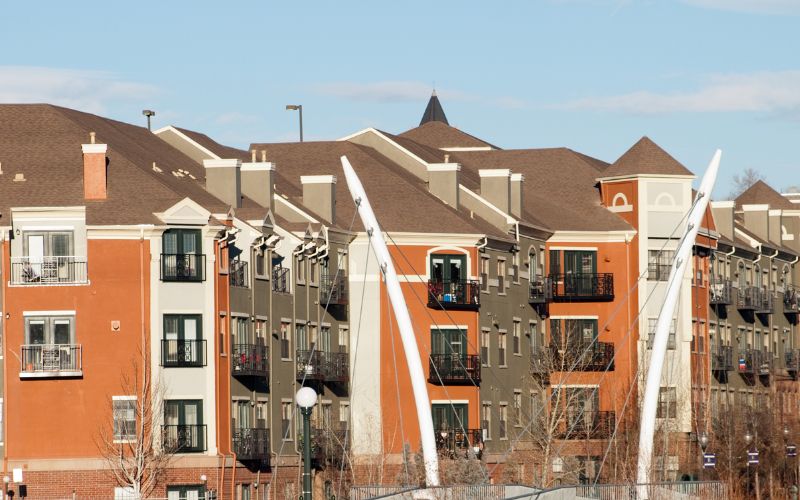The Canadian dream of homeownership is becoming less feasible for many individuals, particularly younger Canadians. According to the most recent census report, only two-thirds of Canadians owned homes in 2021, down from a peak of 69% ten years before. Many feel that they will never be able to refer to themselves as “homeowners,” and that decline in homeownership rates is having a remarkable impact on young people and their plans for the future.
The rise of renters and the decline in homeownership is a symptom of the housing affordability crisis, which has become a hot-button issue across Canada. Rental rates are increasing, with renters’ monthly housing costs outpacing homeowners’ costs. As housing prices in detached markets continue to rise, more people are turning to the condominium market, but supply-chain interruptions and red tape are making it more difficult to keep up with demand. While homeownership remains a major goal for many Canadians, attitudes are shifting. It is becoming clear that archaic pre-pandemic notions of what it means to achieve homeownership may need to be adjusted to accommodate the new normal. Read the full article:
One of the biggest Canadian trends in homeownership may also be the saddest; the decline of home ownership. According to nesto.ca, 33% of Canadians, when asked, feel that they do not ever see a future in which they can refer to themselves as ‘homeowners’.
Their feelings, unfortunately, may not be too far off the mark. Two-thirds of Canadians owned a home in 2021, down from a peak of 69% a decade earlier, according to the most recent census report.
According to Statistics Canada’s 2021 census, the nation’s homeownership rate is falling. Perhaps even more shocking than that is upon whom this statistic has the greatest impact.
Home Ownership for Canadian Youth at Risk
Young persons, in particular, are disproportionately impacted. When comparing 2021 data with that of just a decade earlier, the results are grim; they have a low likelihood of ever owning a home. Younger Canadians experienced the biggest decline in homeownership rates between 2011 and 2021, with the rate for people in this age group dropping from 44.1 to 36.5 percent.
For those able to achieve the echelon that is home ownership, it usually comes as a result of some financial buttressing; either a financial contribution from dear old mom or dad either in the form of a gift or loan or the younger generational person receives an inheritance.
Rising Rental Rates
Meanwhile, and not unexpectedly, the rental rate increased. Statistics Canada says the number of renter households grew at more than twice the rate of owner households between 2011 and 2021.
The push and pull relationship seen in rental and homeownership rates is concrete evidence of a hot-button topic on the lips of Canadians from Boundary Peak to Cape Spear to Middle Island to Ellesmere Island; the housing affordability crisis. The rise of renters and the decline of home ownership demonstrate that for many, purchasing a home has simply become out of reach.
We are seeing this trend most frequently in the more urban communities of the Great White North. This likely comes as no surprise to those fellow Canucks that call Toronto, Vancouver, Montreal, Ottawa, Halifax, or Victoria home.
Renters’ monthly housing expenditures outpaced that of homeowners’ costs during the most recent census period, according to a comparison made by Statistics Canada.
In contrast to inflation, which increased by 9.5 percent between 2016 and 2021, the median monthly housing cost for renters increased by 17.6 percent during that time. The median cost of housing for homeowners increased by 9.7%.

Condos on Trend
As prices in the detached housing markets continued to skyrocket throughout the first eight months of 2021, the impact was a tidal wave of demand on the condominium market. This market sector saw sales soaring in major Canadian centres.
However, supply chain interruptions felt globally drove the costs of raw materials, such as those used in construction, soaring. Inflation, which hit a decades-long high of 8%, drove up both goods and services, making the cost of living for Canadians feel all but unattainable.
In an effort to manage the rising impact of inflation and to avoid an all-out recession, the Bank of Canada made a series of increases to the overnight rate, which in turn, impacted the cost of borrowing significantly. Although Executive Governor of the Bank of Canada Tiff Macklem’s strategic increases were part of an overall fiscal ‘belt-tightening’, for many Canadians, they were the proverbial straw on a dogpile of expenses impacting affordability.
Pandemic Problems Foster Ingenuity
These challenges impacting affordability did foster some fairly creative problem-solving. One trend that is on the rise when we compare the statistics from the last decade to this is the uptick in multigenerational housing.
Multigenerational housing is when we see multiple generations. For example, it’s when parents live with their adult children and their grandchildren. In this illustration, there are three generations of one family living together in the same dwelling.
That is something that is becoming increasingly common. It allows for sharing of the rising costs of the dwelling, such as , utilities, and landscaping or snow removal. It also provides some much-needed relief from the higher costs of raising a family such as the growing expenditure of grocery shopping. Often times, the middle generation (the parents with small children living with their parents) is able to gain intrinsic support from their parents, either fully or partially in areas such as childcare. This, in turn, provides some much-needed financial relief to the middle generation who may be struggling to make ends meet.
One off-shoot trend because of this is the increase in house size. The COVID-19 pandemic forced people to think critically about whether their existing dwelling really supported the change in circumstances. It’s common knowledge that there was a rise in the number of properties with home offices but there the global pandemic increased, in some markets, the number of units of ‘large footprint homes’ due to the amalgamation of multiple families in one dwelling.

In Conclusion
While homeownership still remains a major milestone and dream for a lot of Canadians, attitudes are shifting. The attitude that “you have arrived” once you own a home is not as prevalent as it once was. In a 2019 campaign speech, BC Liberal Party leader Andrew Wilkinson describes it as a “wacky time of life,” “fun,” “enjoyable,” and a “rite of passage.” For many Canadians, when they reconcile the sacrifice needed to achieve homeownership with quality of life, of course, that’s simply not the case. One thing is clear about rental and home ownership in the future, we must be willing to let go of archaic pre-pandemic notions in order to embrace the ‘new normal’ before us or risk being left behind.
Heather McDowell is a mother and a REALTOR®. Heather has spent most of her real estate career selling residential real estate, and its leasing and has dealt with the additional complexities of the cottage, timeshare and rural properties, and condominiums. She has dabbled in new construction and is expanding her portfolio to include commercial sales and leasing. Heather is also a dedicated volunteer for both the local women’s shelter and a national hospice organization and is an emerging playwright.
Heather describes her focus as diversifying real estate content that not only addresses national matters but explores those issues unique to each province and territory.
You can contact Heather at heather@crewmedia.ca or find her on socials at:
Facebook – https://www.facebook.com/thestoreytellingcompany/
LinkedIn – www.linkedin.com/in/heather-mcdowell-98134118b
Instagram – https://www.instagram.com/hmcdowellrealty/








